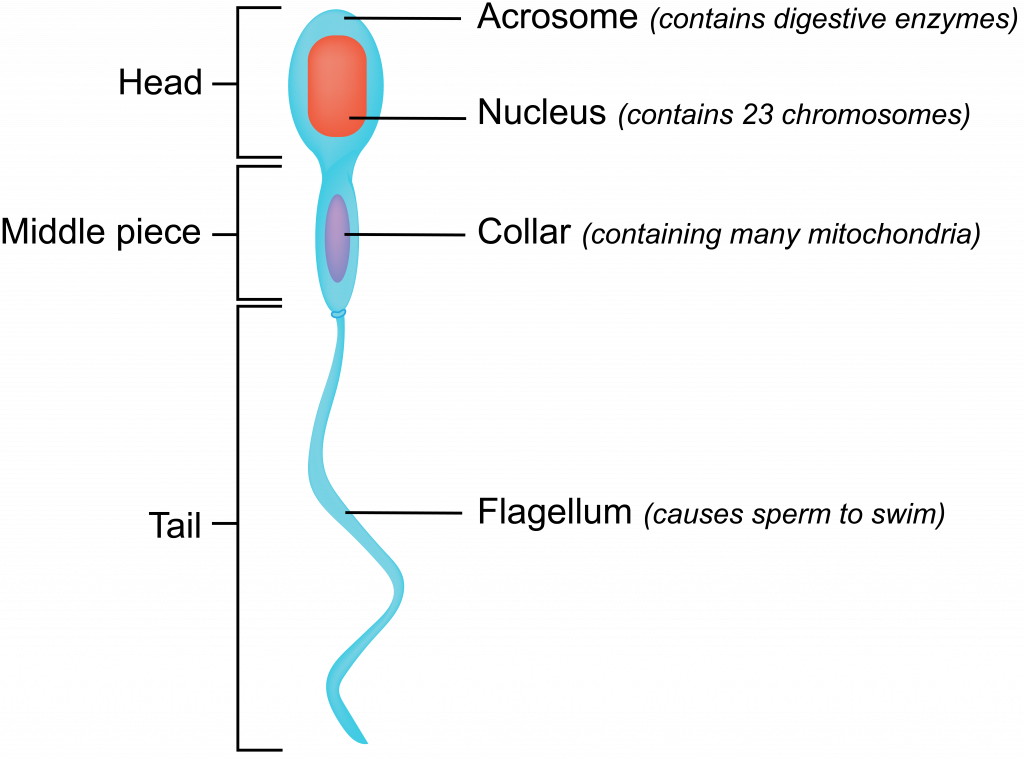14.7 Human fertilization: from gametes to a zygote
As we discussed in chapter 13, fertilization in humans happens in the oviducts. For this to happen, the sperm need to arrive in the oviducts when there is an egg there. Sperm can stay alive in the female reproductive tract for 3-5 days. An egg needs to be fertilized within about 12 hours of ovulation; and while some fast-swimming sperm can reach the egg within an hour, many will take a day or more to swim that far. Based on these sperm swimming and egg survival times, the most likely timing for vaginal sex to occur to achieve fertilization is from 1-3 days prior to ovulation.
Note: while there are birth control methods that take advantage of this timing, there are a LOT of babies conceived by people thinking that it is a “safe” time to have sex. Keep in mind that the drive to have sex is increased for both males and females during times of high fertility. So if you are trying to convince yourself you are “safe” from pregnancy, remember there are evolutionary drivers for reproduction that may be greater than your ability to calculate pregnancy risk.
In a typical ejaculate there are about 100 million sperm. When these sperm are ejaculated in semen into a vagina, they begin swimming toward the cervix, through the cervix, through the uterus and into the oviducts. This is a perilous journey for the sperm. Many never make it through the cervix, some are attacked by immune cells in the uterus, and roughly half of those that remain enter the empty oviduct (remember, in general only one follicle in one ovary matures per menstrual cycle). Out of the 100 million-plus contenders only several dozen sperm actually reach the egg. When sperm and egg meet in the oviduct, the head of the sperm (or acrosome) secretes an enzyme that helps the sperm swim through the jelly-like coating of the egg. Once through this layer, the sperm fuses with the cell membrane of the egg; the membrane then undergoes chemical changes, blocking other sperm. Only the genetic material from the sperm enters the egg (mitochondria and all other parts of the sperm remain outside the egg). At this point the egg completes meiosis II. The genetic material from the sperm fuses with the genetic material from the egg and a fertilized egg, or zygote, is formed.


